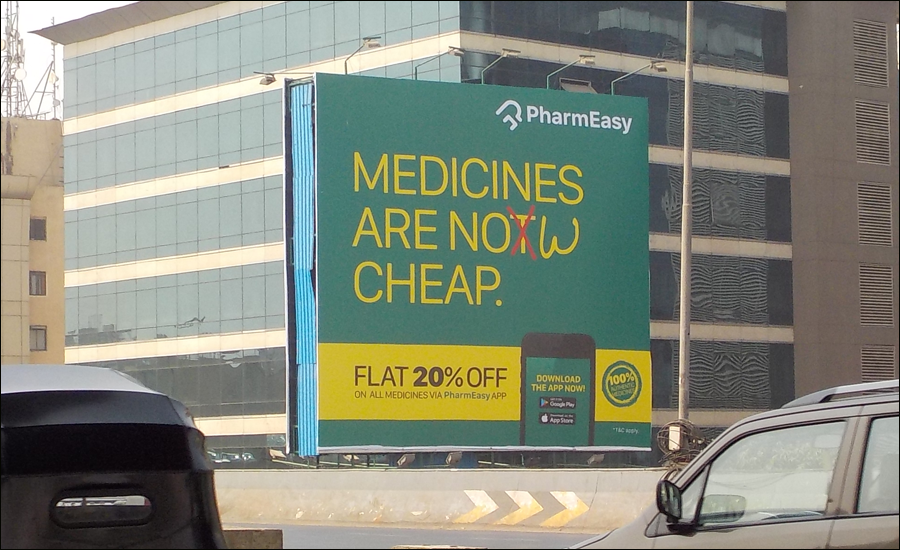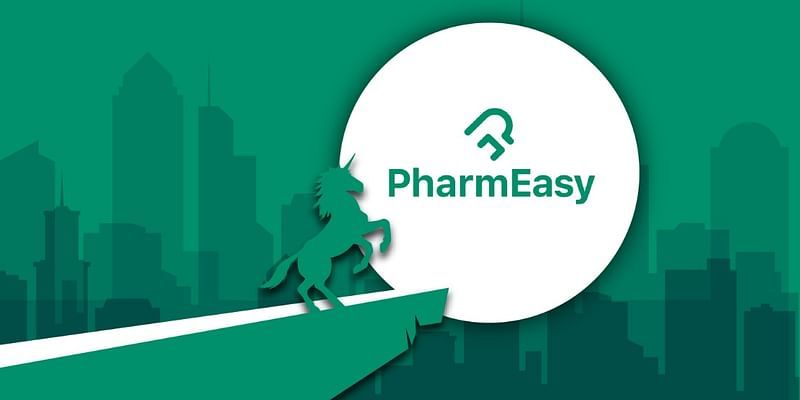Slash On Growth For The Sake Of Profit: Is This PharmEasy Move Will Be Easy To Attain Trade-Off Sustainability?
PharmEasy's chief executive officer Siddharth Shah discussed what went wrong and what the firm plans to do to return to profitability.

PharmEasy, a health tech startup, appears to be able to keep its head above water. The unicorn, dealing with sluggish growth, debt, and significant value cuts from investors, had reason to celebrate when it went EBITDA profitable in April of this year. However, the fund crisis that began in 2022 for VC and private equity-backed entities lasted until 2023. Large players, particularly unicorns, are evaluated for their capacity to create cash flow and maintain themselves. According to reports, the health tech startup made Ebitda earnings of around INR14 crore-INR15 crore in April and May. Unfortunately, this has come at a cost. And, even if the business is back in the market to raise stock, investors are still concerned.
Cost-cutting measures in PharmEasy.
PharmEasy made a myriad of initiatives to improve Ebitda. The firm has considerably downsized cash burn by reducing discounts and ad costs. According to an industry official, most online firms, comprising the health tech startup, have reduced prices to approximately 15%, except Flipkart (which is giving up to 25%-30% discounts). PharmEasy has closed half of its warehouses and laid off many staff. API Holdings has yet to release its financials for FY23, although the corporation recorded consolidated pro-forma revenue of INR6,384 crore and a net loss of INR4,043 crore in FY22. Tata 1mg’s sales, the competitor, in FY22 were INR 222 crore, with a net loss of INR49 crore.
In a November 2022 interview, PharmEasy’s chief executive officer Siddharth Shah discussed what went wrong and what the firm plans to do to return to profitability. The corporation was still losing INR40 crore/month at the time. The management assured the board they would generate operational profits by September this year, but the firm did so in April. While this is a positive indicator, the question is if it is sustainable!
Shah stated that the corporation would have to make difficult decisions, like reducing growth from 50% to 25% in FY23. Some industry participants feel PharmEasy has also lost market share in e-pharmacy. According to a top pharma industry executive, PharmEasy is profitable since it has drastically reduced prices. However, they have been slowly losing market share, with one industry participant suggesting that the business may have lost half of its highest market share of roughly 42%-43%, which it had reached shortly after acquiring competitor Medlife in 2021. They have selected between expansion and profitability. However, if the firm moves ahead with expansion again, it would have to spike its marketing spending and provide discounts, impacting profitability.

The dominance of the offline retail market in the Pharma sector.
According to Pallav Johri, chief business officer and founding team member of Anahad Pharma, there is no compelling reason for customers to buy pharmaceuticals online, given India’s vast retail network of pharmacy outlets. The surrounding medical stores also provide 10%-20% discounts and free, speedy home delivery. Johri, who formerly worked for drugstore chain MedPlus and health tech business Tata 1mg, also mentions the trouble of submitting prescriptions and the lengthier turnaround time in the case of online transactions. Customers will not favour online venues for severe illnesses. As a result, these players will need to continue offering considerable discounts to attract and maintain customers.
PharmEasy has grown fast through a series of acquisitions. However, merging these organisations is difficult, and fixed costs will stay high as long as these integrations and operations are not optimised. The firm has been moving in this direction, which has aided in its transition to operating profitability. The CEO adds that PharmEasy’s parent firm API Holdings’ wholesale business and Thryocare’s testing business are lucrative, which may compensate for the loss in their core online pharmacy operation.
Tough past.
PharmEasy has had a number of setbacks in recent years. The firm has struggled to attract capital, and its valuation has halved since 2021. Also, it was on a roll two years ago. It made its largest acquisition in June 2021. The firm paid around INR4,500 crore for the diagnostic chain Thyrocare Technologies to enhance its outpatient care capabilities. PharmEasy’s worth more than tripled as a result of this transaction.
While PharmEasy’s wholesale or B2B business performs well, the margins are incredibly modest. Thyrocare’s business is profitable and cash-flow positive, although earnings had fallen in FY23 from a high base in FY22 when Covid-19 testing contributed considerably. Thyrocare’s sales were INR527 crore in FY23, down 11% from FY22, while net profit was down 63% to INR66 crore. In FY23, it generated INR129 crore in free cash flow. Thyrocare’s business supports PharmEasy, but its value has plummeted since it was bought. And there may be issues around PharmEasy’s parent company’s main gem.

Earlier in June, it was revealed that PharmEasy had violated the conditions of its loan covenant with Goldman Sachs, from whom it had borrowed INR2,280 crore in August of last year. PharmEasy had to raise around INR1,000 crore in equity to repay a previous debt it had received from Kotak Mahindra Bank to buy Thyrocare. According to sources, there was a technical default on the loan covenant in January. The fundraising agreement was primarily intended to provide Goldman Sachs with a guarantee of repayment. However, there has been no default on the monthly instalments of roughly INR20 crore given to Goldman Sachs. And, because PharmEasy breached the loan condition, the financial giant Goldman Sachs can sell Thyrocare.
But there is reason to be optimistic.
An investor in PharmEasy argues that while Goldman Sachs has taken no action in the previous five to six months, the fact that it can recover assets as per the agreement for the technical default remains an albatross. Speculations about PharmEasy selling Thyrocare have been circulating for months due to the company’s financial hurdles. Still, PharmEasy has constantly refuted this, stating that they have integrated Thyrocare and are already cross-selling.
PharmEasy also aims to grow private label sales to enhance profitability, although it is currently a small part of the company. Furthermore, private labels on medications or wellness products are harder to sell than FMCG items since consumer trust must be established. Getting traction for private-label commodities is also difficult and time-consuming for offline players. For online players, the problem worsens since the lack of a physical link makes it harder to create confidence with clients. Because it is challenging to offer private-label prescription medications, internet players are promoting private-label sales of OTC or wellness items like nutraceuticals, vitamins, or herbal products.
The misuse of provided data!
PharmEasy was embroiled in a scandal earlier recently when Abhijit Majumdar, an IIT Bombay professor, tweeted that after obtaining blood sugar meds from PharmEasy, he received a call from a PharmEasy pharmacist who offered herbal supplements in addition to his existing prescription. It is illegal to recommend medications unless you are a licenced medical practitioner. The health ministry has also expressed concerns about data privacy, exploitation, and misconduct by internet pharmacies and the need for stricter laws.
Despite its size, the corporation still accounts for a small share of the Indian pharmaceutical industry. There is an opportunity for expansion, but at what scale can sustainable earnings be expected remains to be seen. PharmEasy will continue to seek outside funding till then. As a result, it is back in the market to raise around USD100 million. Avendus, an investment banking business, has been hired by PharmEasy to assist with this funding.
The arrival of the news and the halt of IPO- The corporation was aggressively pursuing expansion.
The business filed draught papers in November 2021 to seek INR6,250 through an IPO. PharmEasy was valued at USD 5.6 billion during its pre-IPO investment round. However, with declining global market conditions and tightened liquidity, the environment shifted radically in 2022. PharmEasy had to abandon its IPO aspirations, seek a high-interest loan from Goldman Sachs to pay off the debt it had acquired from Kotak Bank to fund its Thyrocare purchase and implement cost-cutting measures, including layoffs.

The sword of slashing valuations.
Given the global slowdown in the technology sector, the business is unlikely to receive the high valuations it has previously received. Janus Henderson, a global asset management firm, reduced the value of its ownership in PharmEasy by 50% from December 2022 to USD 2.8 billion, while Neuberger Berman reduced its worth by 21% from February 2023 to USD 4.4 billion. While the firm has shown operational profits in the last two months, investors are concerned about the company’s long-term profitability and growth, which will likely sway PharmEasy’s value expectations and investor involvement in this fundraising round.
The final version.
The online pharmacy and health tech market experienced a lot of movement in financing and acquisitions, as well as rapid revenue development, from 2020 to 2022, fueled by increased demand for online purchases following the Covid-19 outbreak and the availability of easy money. Valuations have also skyrocketed. During this time, PharmEasy completed its acquisition of MedLife to become the country’s largest online pharmacy business, while competitors 1mg and Netmeds were bought by huge conglomerates Tata and Reliance, respectively.
Apollo Hospitals, which already had a significant pharmaceutical distribution business, created Apollo 24/7, an online portal. As the battle heated, participants began offering significant discounts on their site. Discounting is the foundation of the online pharmacy company. Discounts on medication delivery ranged from 25% to 30%. However, India has a significant network of offline pharmacy outlets, with around 8-10 lakh sellers. Local pharmacists have also begun to provide 10%-20% discounts. As a result, unless internet pharmacies provided a more significant discount than local pharmacies, their value proposition was lost.
For example, in the offline pharmaceutical distribution sector, the wholesaler earns 10%, and the merchant earns 20%. As a result, the total stake for firms like PharmEasy is 30%. If companies provide discounts of up to 25%-30% and spend extensively on marketing, they are certain to lose money.
This is why internet pharmacies began offering services like diagnostic testing and medical consultations, among other things, where margins were higher and cross-selling opportunities existed. These services would also be an extra route for attracting new clients to the site. However, competition in the services sector was fierce from online and offline firms, and businesses were forced to rely on discounts to attract clients. As a result, client acquisition expenses for online pharmacies remained expensive.

Until the financing winter set in, internet pharmacies could afford to have big marketing spends and discounts, but once the funding winter set in, they had to rethink their business plans. Given the support of big corporates that are strategic participants, 1mg, Netmeds, and Apollo 24/7 will do better throughout the downturn than PharmEasy, supported by several private equities (PE) companies that demand multifold investment returns. Furthermore, private equity companies have become much more calibrated in their funding recently, with a greater emphasis on profitability. This makes things difficult for PharmEasy!




